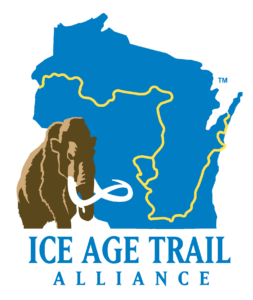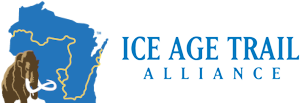By Steve Pence, Land Restoration Specialist for the Ice Age Trail Alliance

Prescribed Fire Season: March through Mid-May
Fire, a useful tool in land restoration efforts, promotes healthy ecosystems. Prescribed burns – intentionally lit fires under controlled conditions – help create healthy, native-species-filled plant and wildlife habitats, meeting land management goals.
As a certified land trust, the Ice Age Trail Alliance utilizes fire, which benefits plant and wildlife communities and improves the hiker experience along the Trail. As a result, from March through mid-May, sections of the Ice Age Trail will be closed for prescribed burns, often for only a few hours.

Benefits of Prescribed Burns
In the past, naturally occurring wildfires kept ecosystems healthy, with prairies and oak woodlands adapting to tolerate fire and benefit from it. And, in some cases, evolving to promote fire, carrying it further through a landscape. For example, slow-growing oak trees need lots of sunlight to establish and live hundreds of years. Wildfires kept other native trees from growing around oaks and competing for their sunlight. Scientists surmise that oaks developed their thick bark to withstand fire damage, giving them an edge over other species. Additionally, oak leaves take years to decompose, allowing large amounts to build up and fuel fires. Plus, their irregular shape makes them more flammable.
A desolate-looking, post-prescribed burn area quickly teems with life. Insects arriving to warm themselves in the solar gain from the black ash attract birds that feed on them. Within days, mammals will come to lick the ash for its mineral benefits. Many prairie plant species flower more vigorously the year following a prescribed burn. Invasive species like honeysuckle and buckthorn are killed off, at least for a year or two, allowing native species to establish.
For these and many other reasons, the Alliance’s land restoration efforts use prescribed burns to mimic the positive effects of naturally occurring wildfires.
Reintroducing Fire onto Alliance Properties
When reintroducing fire, the Alliance takes steps to make it as safe as possible. First, staff and volunteers take classes to learn how to set and manage a prescribed burn, including the intricacies of fire behavior. Then, they prepare for each prescribed burn months and, sometimes years, in advance. This multi-step process starts by creating a burn plan, installing fire breaks around specific areas slated for burning, coordinating with the Wisconsin Department of Natural Resources (DNR) and local fire departments, and having specialized firefighting equipment on hand.

Many prairie plant species flower more vigorously the year following a prescribed burn. Invasive species like honeysuckle and buckthorn are killed off, at least for a year or two, allowing native species to establish.
Burn Permit Process
Before the burn season, the Alliance submits a burn plan, map, and contingency plan to the DNR for each property where a prescribed burn will occur (otherwise known as a burn unit). A Wisconsin DNR Forest Ranger may decide to ground truth the plan before a burn. This boots-on-the-ground information will help a ranger amend the plan, addressing concerns so crews can safely complete the prescribed burn.
Day of Burn
On the day of a scheduled burn, temperature, humidity, wind, and moisture are among the variables considered before the crews proceed. Yet, before the burn takes place, the Alliance’s permit must be activated by DNR approval. In addition, local fire departments and law enforcement agencies may also require burn permits, as well as day-of notification detailing burn start and completion times. (This information helps local emergency services manage the calls from concerned citizens who see the large smoke columns rising from a burn area.)
A tremendous amount of work happens before fire meets the ground, but it’s worth it. A burn’s positive effects are immediate, impacting an area for years afterward.
So, if you see a smoke plum on the horizon this spring, know that a lot of good is being done for plant and wildlife communities!

Prescribed Burn Alerts
Prescribed burn alerts will be posted on the Alliance’s social media accounts for burns the Alliance has been notified of and impact Trail access, or are happening at Alliance-owned preserves. We cannot always track the prescribed burns on properties owned by the state, county, or private landowners. Additionally, due to constantly evolving weather conditions – temperature, humidity, wind, and moisture – property-specific burn notices will not be posted until the day before or of the prescribed burn.
A tremendous amount of work happens before fire meets the ground, but it's worth it. A burn's positive effects are immediate, impacting an area for years afterward.

Trail Closures: What to Do
Do not enter the area if you encounter a “Prescribed Fire Ahead” or “Trail Closed” sign, or see a smoke column. Entering a burn area puts both you and the burn crew in danger. Although, the crews conducting the prescribed burns are trained to make the situation as safe as possible, fires create dynamic conditions requiring the full attention of everyone involved. An unplanned person in a burn unit is a hazard. Not only do you take away resources from the burn, you may unintentionally cause the fire to escape it prescribed boundaries. A runaway fire threatens the safety of people, wildlife, and property.

